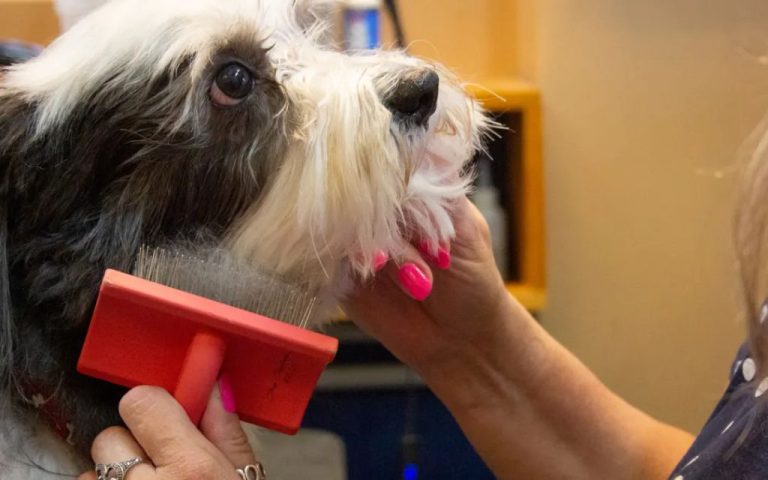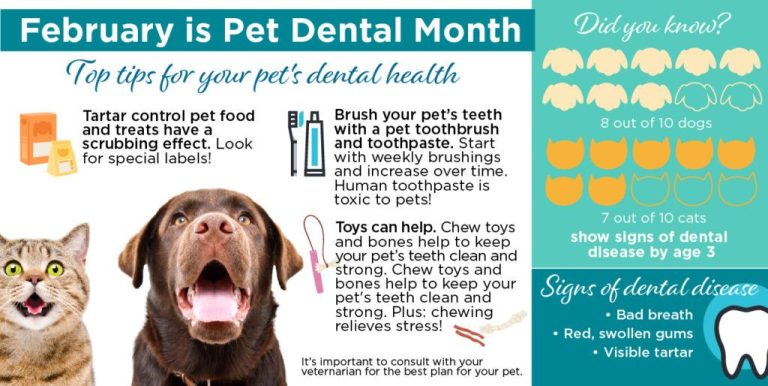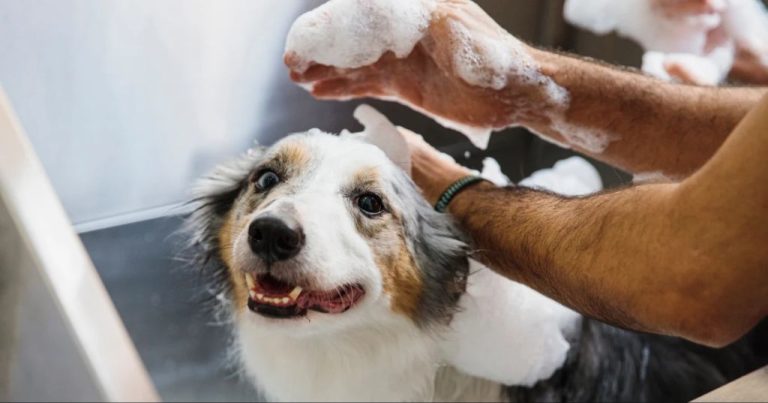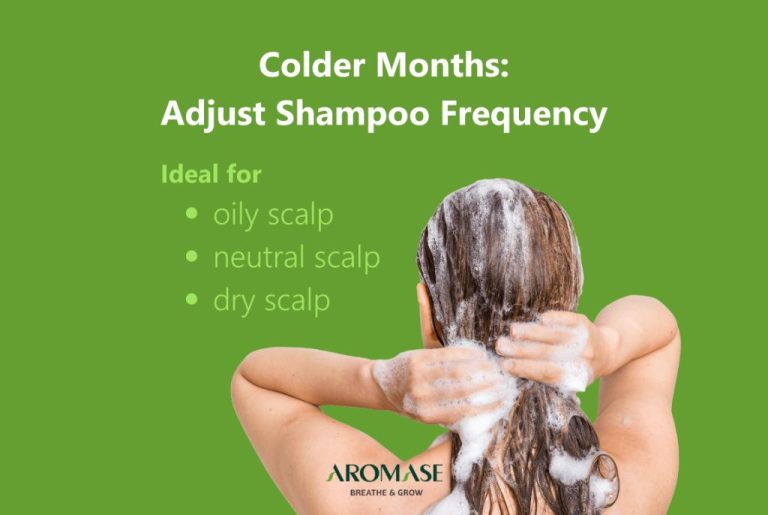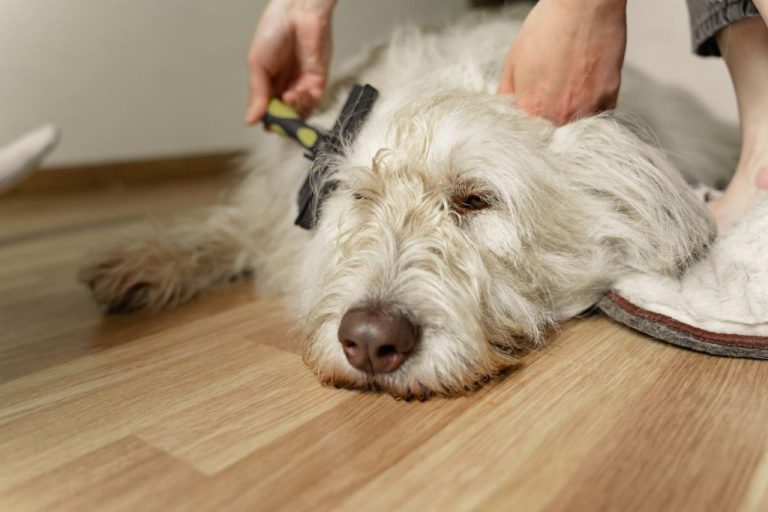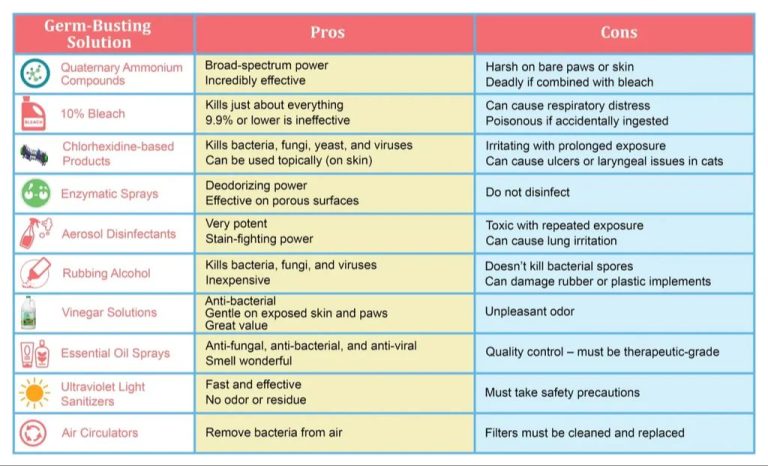Essential Dog Grooming Supplies: A Complete Guide
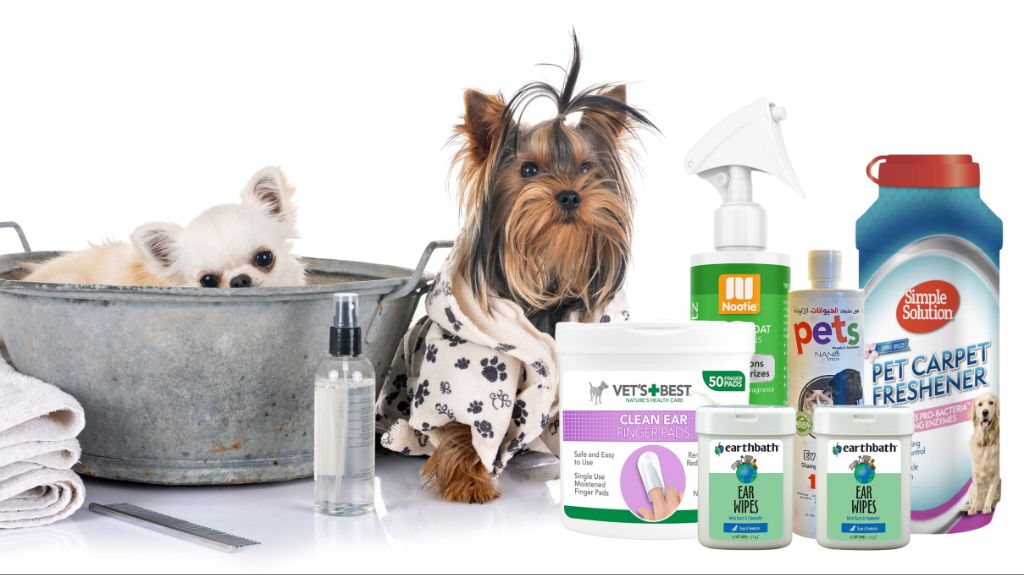
Regular grooming is extremely important for a dog’s health and happiness. As explained on the ASPCA website, “Grooming is as important as bringing your pet to the vet for regular checkups.”
Grooming provides many benefits for dogs. It promotes good hygiene and cleanliness, prevents skin issues, reduces shedding, and improves blood circulation. The physical contact of brushing and massage is soothing and helps strengthen the human-animal bond. A well-groomed dog is happier, more comfortable, and better socialized.
However, grooming requirements vary considerably based on the breed, coat type, age, and health status of the dog. Short-haired breeds like Chihuahuas need less frequent grooming than long-haired breeds like Golden Retrievers. Older dogs or dogs with medical conditions may need adjusted grooming regimens. Responsible pet owners should educate themselves on their dog’s specific needs.
Brushes
Slicker brushes are commonly used for dogs with medium to long hair coats. The fine, short wires help detangle and remove loose hair. Slicker brushes work well on breeds like golden retrievers, collies, and poodles (Types of Dog Brushes and their Uses).
Pin brushes have longer, flexible pins that are perfect for brushing out long, silky coats without scratching the skin. They help distribute natural oils and stimulate blood circulation. Pin brushes work great for dogs with long, flowing coats like yorkies, maltese, and shih tzus (Dog brushes guide – Pride+Groom).
Bristle brushes are best for short-haired dogs with smooth coats. The short, stiff bristles help promote shine and remove loose hair. They are ideal for breeds like labradors, boxers, and beagles.
Undercoat rakes have long, wide-set metal pins to penetrate dense undercoats and remove loose hair. They work well for double-coated breeds like huskies, german shepherds, and chows.
Combs
Combs are an essential grooming tool for long-haired dogs. Regular combing helps remove dead hair, distributes natural oils, and prevents mats and tangles from forming [1]. Mats cause discomfort and can even lead to skin irritation or infections. Using a comb allows you to smooth out the coat right down to the skin and identify any problematic areas.
For long-haired dogs, investing in a steel de-matting comb is highly recommended. De-matting combs have widely spaced teeth to work through densely tangled fur. They help separate and minimize mats and make the coat more manageable. While regular combing can prevent severe matting in most cases, de-matting combs make the process easier when working through challenging tangles. Just be sure to work slowly and gently when using a de-matting comb, as forcing it can hurt the dog.
Clippers
There are two main types of clippers used for dog grooming – detachable blade clippers which allow you to switch out the blades, and fixed blade clippers which have the blades built into the clipper. Common detachable blade brands include Andis, Wahl, and Oster. The blades come in different sizes which determine the closeness of the cut. Choosing the right blade size is important to ensure you don’t cut the dog’s skin. Smaller numbers like #10 and #15 leave more hair, while larger numbers like #40 and #50 cut closer to the skin. A clipper blade size chart can help you determine the right blade for each coat type and breed.
Regular clipping with the proper blades is necessary for breeds with continuously growing hair like poodles and shih tzus to prevent matting and overgrowth. For breeds with seasonal shedding like labs and golden retrievers, clipping can help remove dead undercoat and control shedding if done when the coat starts to blow out. Optional clipping includes styling cuts like the lion cut for poodles. Always use clippers safely by checking the blades, holding skin taut, and taking breaks to prevent friction burns.
Scissors
There are several types of scissors used for dog grooming, each with a different purpose [1]:
- Straight scissors: For general cutting and trimming of the coat.
- Curved scissors: Allow access to hard to reach areas like behind the ears.
- Thinning shears: Used to thin out dense coats by cutting only portions of the hair shaft.
- Blenders: Softer scissor action to blend layered cuts.
- Chunkers: Texturize the coat by chopping into the hair.
It’s important to choose the right scissors for the task at hand and to use them properly. Improper use can lead to cuts, nicks, or uneven trimming. Always handle scissors gently and avoid scissor fatigue to prevent injury to the dog [2].
Nail Clippers
There are three main types of dog nail clippers: guillotine, plier, and scissor clippers. Guillotine clippers have a hole with a blade that slices through the nail when you squeeze the handles. This type works best for dogs with thick nails. Pliers style have a cutting edge on one side of the jaws. They work well for smaller dogs or dogs with thin nails. Scissor clippers have two blades that cut the nail between them, like regular scissors. These allow for more precision.[1]
When clipping your dog’s nails follow these tips: Make sure to have styptic powder on hand in case you cut the quick. Hold your dog’s paw firmly but gently. Identify where the quick is by looking for a colored oval shape inside the nail, avoiding cutting this part. Cut a small amount of nail at a 45 degree angle, about 2mm, avoiding going too short. Use treats and praise to keep your dog calm and make it a positive experience.[2]
Shampoos
It’s important to use dog-specific shampoos rather than human shampoos. Human shampoos have a different pH balance and can dry out a dog’s skin and coat. Some human shampoos contain ingredients that are harmful to dogs if ingested (Source).
There are many types of dog shampoos available for different needs:
- Detangling shampoos help loosen knots and tangles without stripping the coat of essential oils.
- Oatmeal and aloe shampoos soothe dry, itchy skin.
- Shampoos with tea tree oil have antibacterial properties to help heal skin infections.
- Deodorizing shampoos eliminate doggy odor and leave a fresh scent.
- Whitening shampoos brighten white coats.
- Tearless shampoos avoid stinging eyes.
It’s best to choose a shampoo specifically formulated for your dog’s hair type and skin needs. A groomer can recommend the right shampoo.
Toothbrushes
Regular tooth brushing is essential for your dog’s dental health and overall wellbeing. According to the American Kennel Club, poor dental hygiene can lead to periodontal disease, tooth loss, infections, and other health issues. Proper brushing helps remove plaque and tartar to keep your dog’s teeth clean and gums healthy.
When choosing a toothbrush for your dog, look for ones designed specifically for canine use with extra-soft bristles. The size of the brush should fit your dog’s mouth comfortably. Finger toothbrushes that slip over your fingertip can be a good option for smaller dogs or those learning to have their teeth brushed.
You’ll also need special toothpaste made for dogs. Human toothpaste contains ingredients that should not be swallowed, but dogs instinctively swallow when you brush their teeth. Canine toothpaste comes in appetizing meat flavors and is safe if ingested.
The RSPCA recommends starting dental care when your dog is a puppy and brushing daily to get them accustomed to the routine. For adult dogs new to brushing, introduce it gradually over time.
Grooming Tables
A proper grooming table is an essential investment for keeping dogs calm and secure during grooming sessions. There are several options when selecting a grooming table:
When selecting a grooming table, consider the size of dogs you will be grooming. Tables typically range from 24-48 inches long to accommodate small to large breeds. Standard table height is usually adjustable from 24-48 inches. Make sure to choose a sturdy table that can safely hold the full weight of larger dogs. Having a well-stocked first-aid kit on hand is crucial for any dog groomer. Even the most experienced groomers may accidentally nick or cut a dog while clipping or scissoring. Minor scrapes, abrasions, or irritated skin are also common grooming injuries. Being prepared to treat these minor wounds quickly will provide the best care for dogs and reassure owners. Essential first-aid kit contents include: For minor clipper cuts, immediately apply pressure with a sterile gauze pad to stop any bleeding. Clean the area thoroughly with an antiseptic wipe and apply antibiotic ointment. Cover with a sterile bandage or liquid bandage spray. Watch for signs of infection and advise the owner to monitor the wound at home. For irritated skin from clipping, bathing, or drying, rinse thoroughly and apply a cool compress. Avoid further irritation by using a hypoallergenic moisturizer. Recommend owner follow up with their veterinarian if irritation persists. Having emergency numbers on hand for the nearest animal hospital or after-hours vet clinic is also an important part of first-aid preparedness. And take a pet first aid class for training on assessing and handling more serious injuries. First-aid Kit

